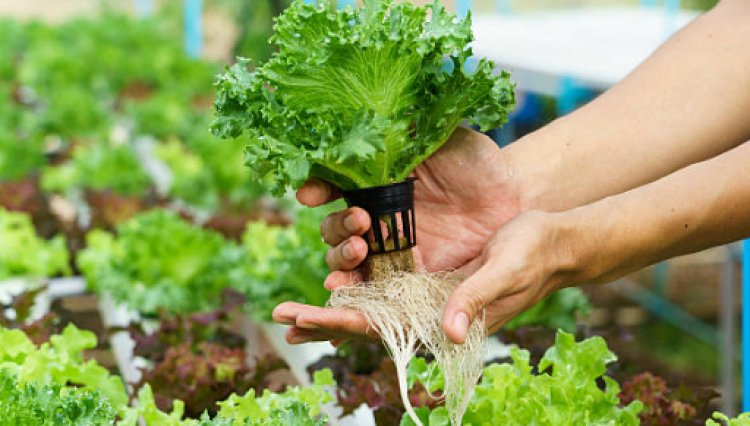6 Best Hydroponically Produced Vegetables
The solution to growing vegetables with fewer soil issues and less space is to use hydroponic systems. The development of home hydroponic systems enables one to grow vegetables in small spaces, with less watering and ideal soil conditions that enable them to flourish.

What is hydroponics
Hydroponics is the art of planting without soil. In hydroponics, plants are grown in water that has been treated with nutrients, either with or without the mechanical assistance of an inert medium like sand, gravel, or perlite. Aquaculture, nutriculture, soilless culture, and tank farming are additional names for hydroponics.
Benefits of growing vegetables hydroponically
Vegetables produced hydroponically are cultivated in a nutrient-rich solution. Hydroponic vegetable gardens are renowned for their higher plant growth rate, higher yield, off-season produce, less water intake, low land requirement, no weather dependency, no soil usage, and pest-free produce because everything from the temperature to the nutrient feed remains under your control.
Therefore, hydroponically grown veggies are perfect for urban dwellers with busy schedules and limited space. Here are some of the vegetables that can be grown hydroponically at home;
Coriander

One of the simplest plants to grow hydroponically is coriander. The plant develops more quickly and flourishes more if the fertilizer concentration is appropriate and the water quality is good. The fact that coriander requires little space makes hydroponic home systems the ideal method for growing it. This medicinal plant treats toothaches, heart problems, and even brain problems.
Lettuce

Lettuce is the ideal first plant to cultivate with hydroponics, especially for beginners. This is since it demands little to no experience and only incurs a small expense. In addition, lettuce is ideal for hydroponic systems used at home. It develops in 30 days or fewer and needs chilly conditions.
Kale

Due to its adaptability, the nutrient-rich plant kale thrives in hydroponic environments. Thus, it can thrive in a range of hydroponic systems. The best feature of kale, though, is the broad spectrum of electrical conductivity that enables it to coexist with other crops. As a result, the produce is better and of higher quality.
Microgreens

Microgreens are little plants that have a powerful taste and nutritional punch. They are quickly produced repeatedly because they may be harvested in 6 to 14 days. Microgreens are among the most advantageous hydroponic plants as they do not require a lot of light to thrive when cultivated hydroponically.
Basil

Basil is a woody herb with a delicious Italian flavor and an enticing scent. It has numerous uses, including culinary and medicinal ones. Basil heals many ailments, whether worm infections, kidney problems, or stomach spasms. Basil must be pruned daily and kept at a high temperature when grown hydroponically for optimal results. The crop time may only last 28 days under the best circumstances.
Spinach

Spinach is a green vegetable with a wide range of applications and is a superb source of vitamins and minerals. Spinach is one of the plants grown most frequently in hydroponic systems, like lettuce. To avoid the bitter taste, make sure to get fresh spinach seeds. Additionally, plant 4-5 seeds in each hole to ensure that each cube has at least one healthy plant.
Can root vegetables be grown hydroponically?
Root veggies like carrots, beets, or bigger ones like cauliflower may be challenging to grow in a small hydroponic system and might need a complex setup.
How hydroponic work
Hydroponic crops are planted in inert growing media and supplied with nutrient-rich solutions, oxygen, and water, fostering rapid growth, stronger yields, and superior quality.
When a plant is growing in soil, its roots are constantly looking for the nutrients it needs to survive. A plant doesn't need to expend energy to maintain itself if its root system has direct access to nutrition and water. It is possible to focus the energy that the roots would have used to find food and water toward the development of the plant. As a result, fruit and flower blooming and leaf growth flourish.



























